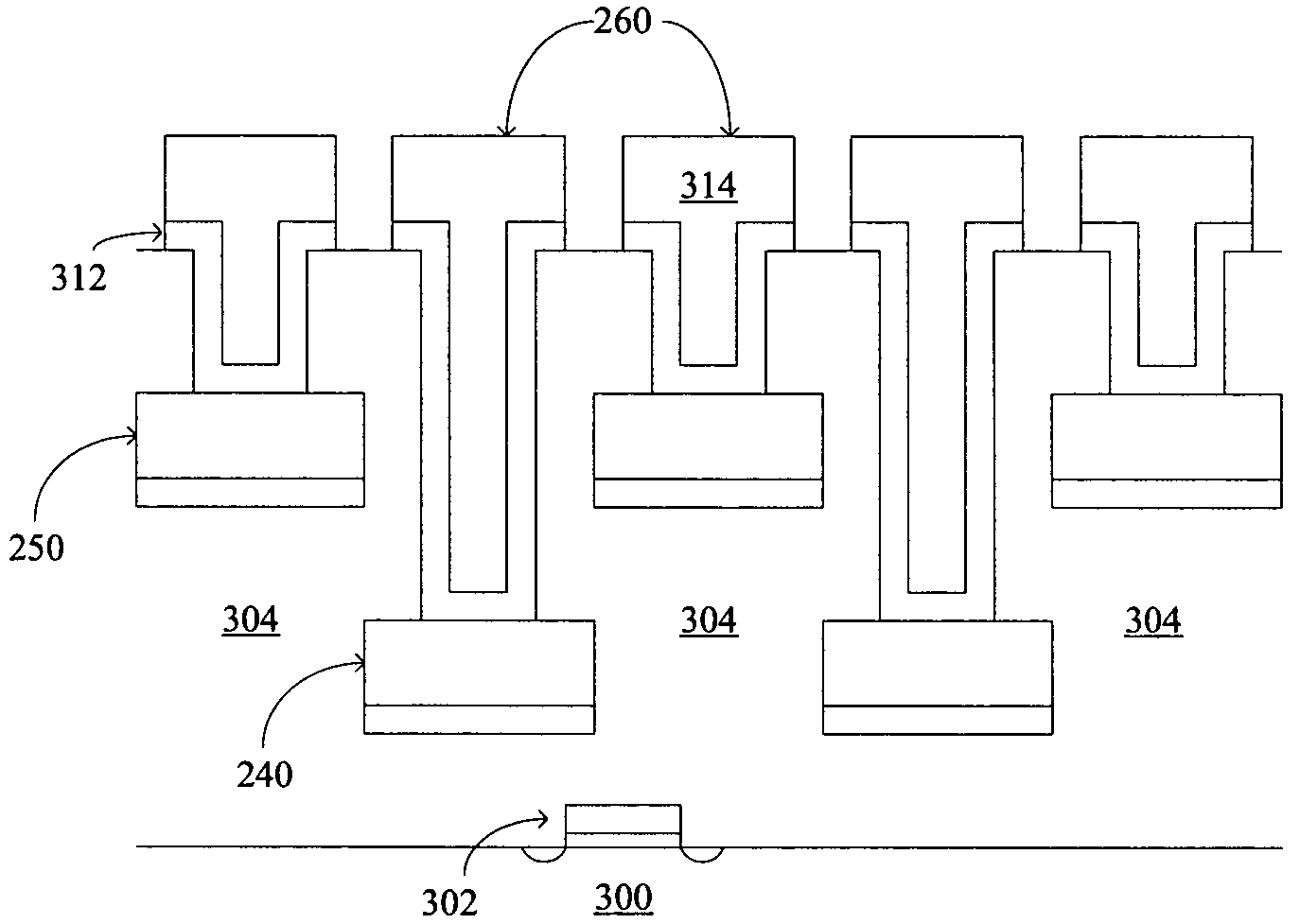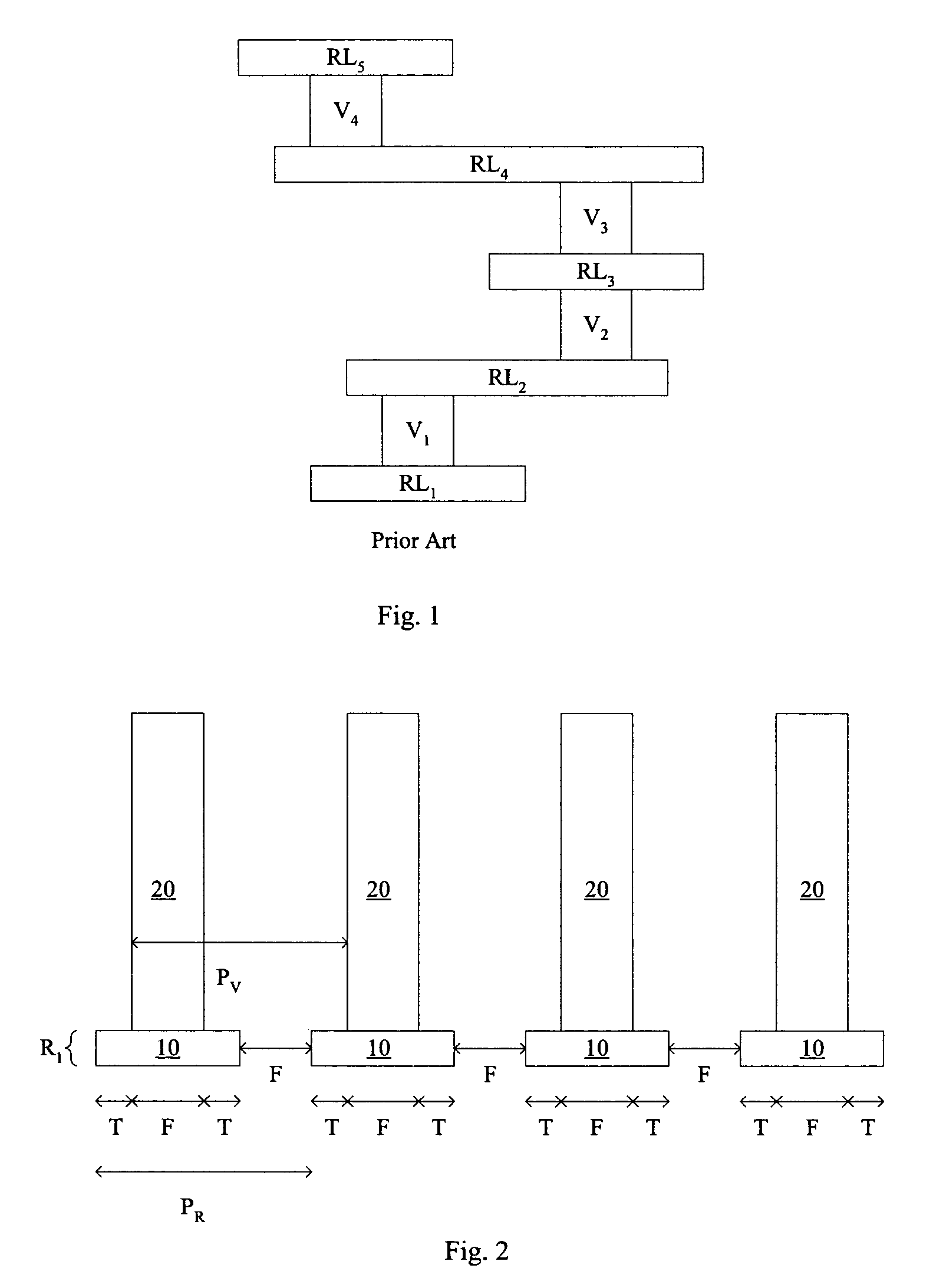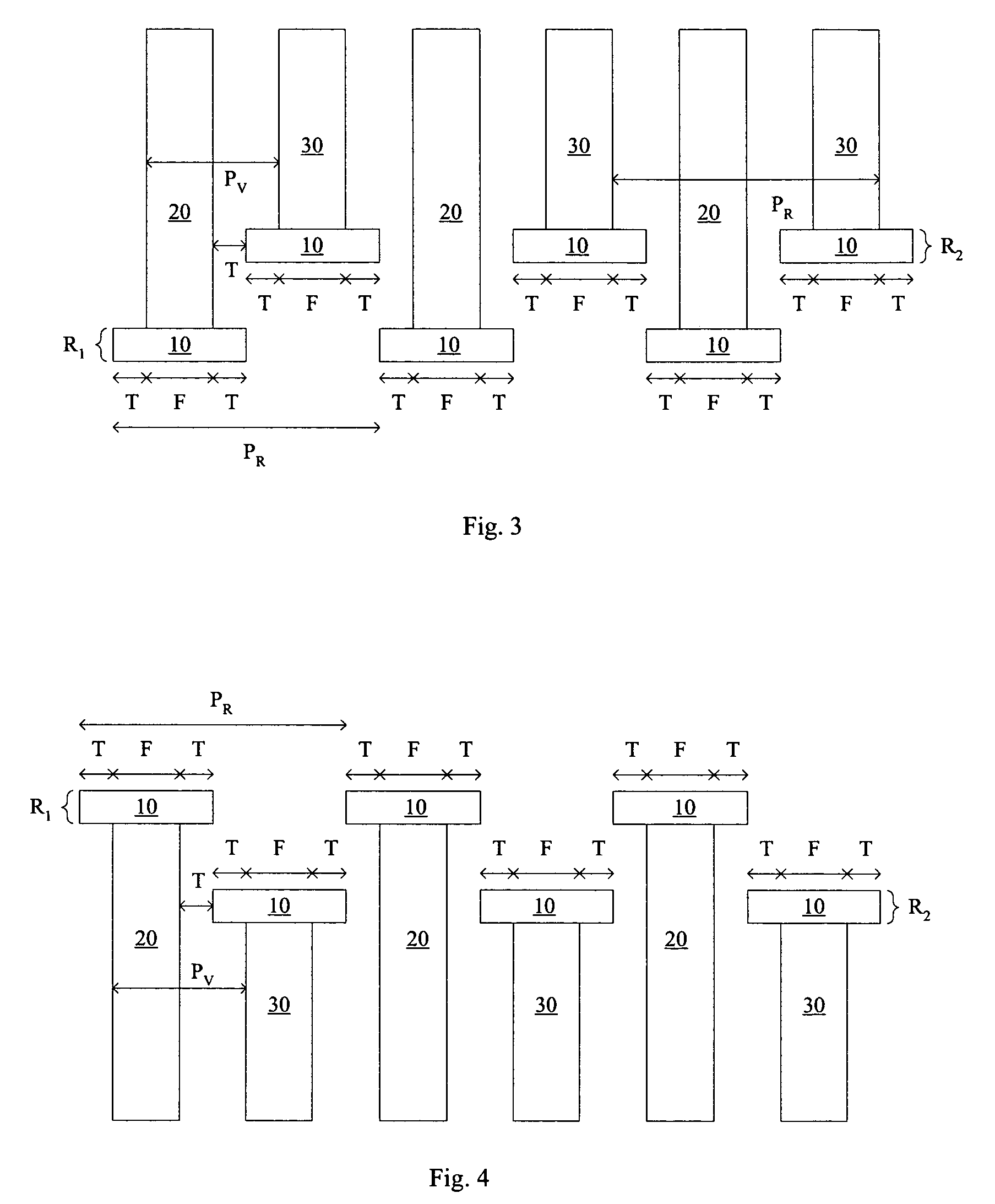High density contact to relaxed geometry layers
a geometry layer and high density technology, applied in the direction of semiconductor devices, semiconductor/solid-state device details, electrical equipment, etc., can solve the problems of inefficient space utilization and extra processing steps of conventional arrangemen
- Summary
- Abstract
- Description
- Claims
- Application Information
AI Technical Summary
Benefits of technology
Problems solved by technology
Method used
Image
Examples
Embodiment Construction
[0024]Monolithic three dimensional memory arrays are described in Johnson et al., U.S. Pat. No. 6,034,882, “Vertically stacked field programmable nonvolatile memory and method of fabrication”; Johnson, U.S. Pat. No. 6,525,953, “Vertically stacked field programmable nonvolatile memory and method of fabrication”; Knall et al., U.S. Pat. No. 6,420,215, “Three Dimensional Memory Array and Method of Fabrication”; Lee et al., U.S. patent application Ser. No. 09 / 927648, “Dense Arrays and Charge Storage Devices, and Methods for Making Same,” filed Aug. 13, 2001; Herner, U.S. application Ser. No. 10 / 095962, “Silicide-Silicon Oxide-Semiconductor Antifuse Device and Method of Making,” filed Mar. 13, 2002; Vyvoda et al., U.S. patent application Ser. No. 10 / 185507, “Electrically Isolated Pillars in Active Devices,” filed Jun. 27, 2002; Herner et al., U.S. patent application Ser. No. 10 / 326470, “An Improved Method for Making High Density Nonvolatile Memory,” filed Dec. 19, 2002; Walker et al., U....
PUM
 Login to View More
Login to View More Abstract
Description
Claims
Application Information
 Login to View More
Login to View More - R&D
- Intellectual Property
- Life Sciences
- Materials
- Tech Scout
- Unparalleled Data Quality
- Higher Quality Content
- 60% Fewer Hallucinations
Browse by: Latest US Patents, China's latest patents, Technical Efficacy Thesaurus, Application Domain, Technology Topic, Popular Technical Reports.
© 2025 PatSnap. All rights reserved.Legal|Privacy policy|Modern Slavery Act Transparency Statement|Sitemap|About US| Contact US: help@patsnap.com



